How to remove cooking residue from non stick pans?
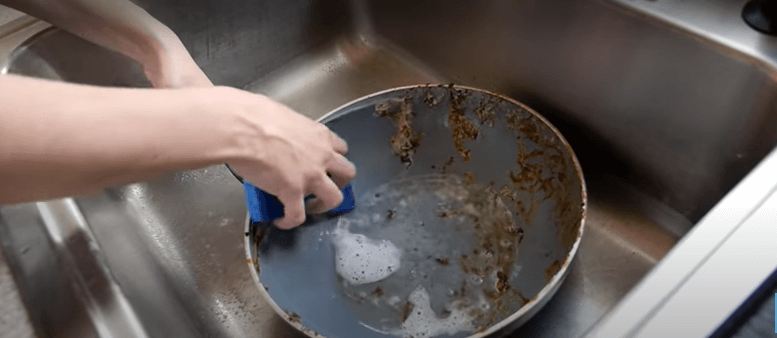
Cooking residue can build up over time in non stick cookware. This buildup can cause food to stick to the pan, leading to burnt or undercooked dishes. Are you bothered about how to remove cooking residue from non stick pans? Then this is for you to share the solution to your problem.
Non-stick pans have become popular for their great feature; they don’t require greasing. They are longer-lasting than common pans. Unfortunately, these pans aren’t perfect. Over time, the coating can wear off, leaving residue that causes food to stick. You can clean your non-stick pans using baking soda.
How often do you clean your nonstick cookware?
Nonstick surfaces are great because it is easier to clean than regular pans. They also tend to last longer. However, cleaning them isn’t always straightforward. In addition, some nonstick coatings contain toxic chemicals that can leach into food.
The coating on nonstick pans has become ubiquitous. These pans are designed to release food easily without sticking or leaving behind a greasy film. However, these
pans can be tricky to clean.
You can use baking soda to eliminate tough stains from your non-stick pans. Take a spray bottle and simply pour an equal amount of water and baking soda into it to apply to the surface. Wash off the pan with water after letting it sit for 15 minutes. For tougher spots, scrub with a toothbrush dipped in vinegar.
How to remove cooking residue from non-stick pans by using an oven?
Step-1: First, let the oven preheat to 200 C (400 degrees F).
Step-2: Place the pan in the oven for 10 minutes.
Step-3: Now, eliminate the pan from the oven to cool it slightly before removing any remaining food residue.
Step-4: Use a paper towel to wipe out excess oil.
Step-5: Repeat steps 2-4 until no more oil remains.
Step-6: Wipe down with a dry cloth.
Step-7: Rinse out the pan with hot water.
Step-8: Dry the pan thoroughly.
Step-9: Store the pan in a cool place.
How to clean a burnt non-stick pan?
Clean your cookware by hand-wash with water & mild soap. Don’t put your non-stick cookware in the dishwasher. Dishwasher detergents that are too abrasive and water that is too hot can erode the pan’s nonstick coating. Instead, gently scrub your pan with a sponge or brush and lukewarm water.
How to get burnt food off a nonstick pan?
Did you get sidetracked while preparing your meal? Your nonstick pan is now completely covered in a burned mess. However, you can make it clean again. Here’s a step-by-step guide on how to do it:
Step-1: Return your pan to that same burner.
Step-2: Pour baking soda and water into the pan. Mixing 1/4 cup baking soda into 2 to 3 inches of water is enough to fill the pan.
Step-3: Now cook for around ten minutes.
Step-4:
- Allow the solution to sit for a few minutes.
- Clean your non-stick pan with the hot soapy solution and wash it with plain water.
- Use a soft cloth to dry your non-stick pan and store it.
Congrats! You have removed cooking residue from non-stick pan and make it spotless and stick-free again.
Learn “how to clean a black kitchen sink” here.
How to make a non-stick pan non-stick again?
You may detect a thick buildup after using a nonstick pan for years. However, you don’t need to replace your pans just yet just because it’s starting to stick. Vinegar is the salvation hero to save your day.
Put one-third vinegar with two third water on your pan and let them boil for a few minutes. Now let it cool before washing with soap. This should remove all of the greasy residues accumulated over time on the pan.
How to clean a non-stick pan with baking soda?
Your nonstick cookware sometimes needs an extra hand though you wash them by hand or dishwasher daily. Use your expired baking soda as a cleanser for your non-stick pans. Make a solution by mixing baking soda with water to remove tough stains from your cookware.
How often do you clean non-stick pans by using baking soda?
You can use baking soda solution to regularly clean your pot and pans. Besides, you can save the method to apply on stubborn, burnt stains only. Use baking soda as a thorough cleaner whenever you need to clean your non-stick pans.
Necessary items:
Instructions:
How to Clean Enameled Pots?
Porcelain-enameled cast-iron cookware appears to be indestructible and reasonably nonstick. But it can grow crusty, just like any other pan. Boiling water containing baking soda is the open secret to eliminating tough stains.
Step-1: Boil the Water
Pour enough water into your non-stick cookware to cover the burned area. Then boil them on medium heat for a great cleaning experience.
Step-2: Add Baking Soda to make the solution
Stir in 2 teaspoons of baking soda with a wooden spoon. Stir the solution to cook for a few minutes.
Step-3: Scrape the Cooking Pan
Empty the pot and scrape it stain-free by using warm water. Then let it dry before storing.
How to remove cooking residue from copper bottoms of non-stick pans?
Use baking soda, lemon, and vinegar to remove stains from your copper bottom cookware. Combining these three cleaning agents will bring your pans to their shiny selves.
- Cover the Base
Scatter baking soda everywhere in the copper bottom of the pan by turning it upside down. Next, add vinegar to the pan’s bottom.
2. Using a Lemon as a Scrub
Take a lemon and cut it in half to use as a scrubber. Now scrub the bottom of your non-stick pan. Scrub the sides as well as necessary.
3. Rinse and dry
Now rinse your pan with clear water and dry it with a clean towel.
How to Clean Non-Stick Frying Pans?
A mixture of baking soda and water works to remove leftover food aromas and flavors from non-stick frying pans. Baking soda is a smart cleaning agent because of its mild abrasive feature. In addition, you can use baking soda to remove burned oil & stubborn stains.
- Produce a Paste
Pour water into the pan to cover its bottom. Sprinkle some baking soda over the water and make a thin paste.
- Rest, rinse, and scrub
Allow the pan to sit for several hours before rinsing and washing it.
- Remove Difficult-to-Remove Stains
Mix 4 teaspoons baking soda with 1/2 cup water in your non-stick frying pan to remove persistent spots. Let the mixture boil for a few minutes, and then cool it. Now, use plain baking soda and a non-stick-friendly nylon scrubber. It will remove all cooking residue from your non-stick cookware.
How to clean cooking residue from non-stick pans with vinegar & baking soda?
Take enough water into the pan and make sure it covers the pan’s bottom. Next, put two tablespoons of baking soda and two tablespoons of white vinegar in the water and boil the solvent. After allowing the liquid to cool fully, rinse the pan with warm water and scrub with a non-abrasive sponge.
Frequently Asked Questions:
- What kind of cooking utensils are ideal to use with a nonstick pan?
Answer:
Heat-resistant silicone or wooden utensils are suitable for a nonstick pan. Make sure you choose the correct material spatula to use in nonstick pans.
- Does baking soda damage non-stick pans?
Answer:
Baking soda acts as a solid abrasive that removes the traces successfully and without causing damage to the non-stick surface. Wash with soap and water once the residue has been removed. Rinse thoroughly and dry with a soft cloth.
- Can I use high heat with my nonstick pan?
Answer:
The simple answer is no. You should avoid using your nonstick cookware on high heat. Always keep the flame low or medium to protect your pan’s surface from getting burnt. High heat might cause the coating to deform and the pan to be ruined.
- When should you replace a nonstick pan?
Answer:
Non-stick pans are not as durable as other forms of cookware. It’s time to replace your pan if it’s still sticky after cleaning, the covering is peeling off, or the interior is badly damaged. However, your nonstick pan can stand for about five years when properly cared for.
Read How to trick an induction cooker
Conclusion:
Keeping your nonstick pans clean from cooking residue is not easy. You need to wash them every time after preparing a new meal. We have discussed several ways for “how to remove cooking residue from non-stick pans.” Now you can maintain your nonstick cookware a way better than before. So enjoy your cooking with clean and hygiene cooking pans.

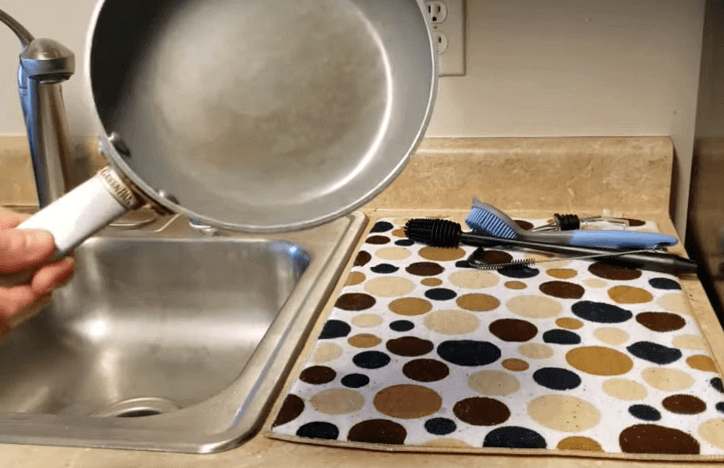
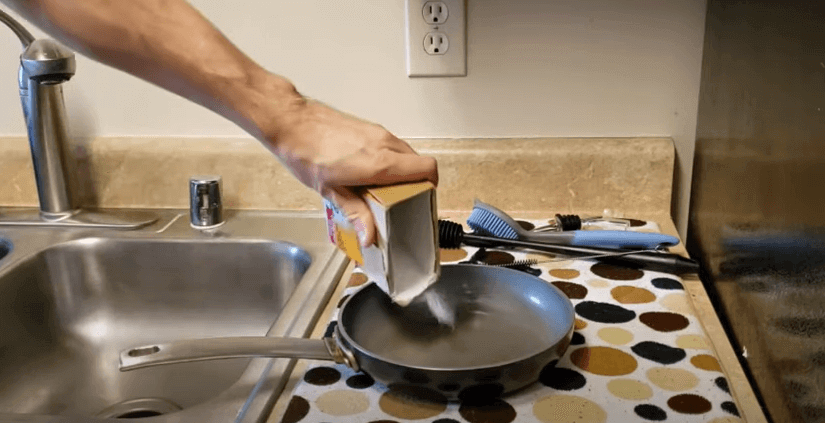
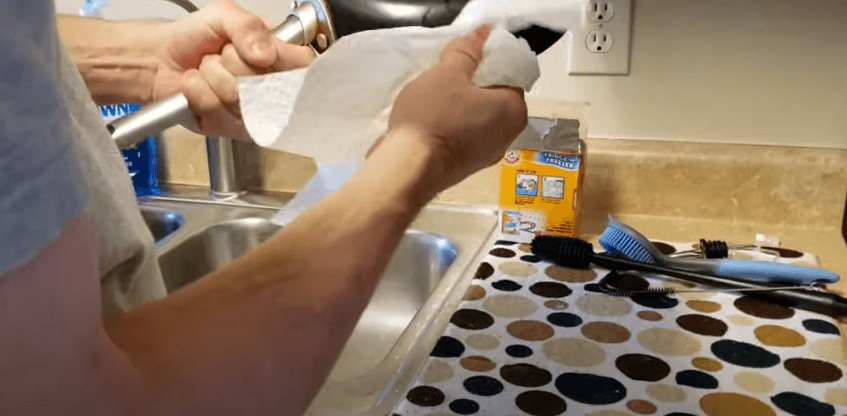
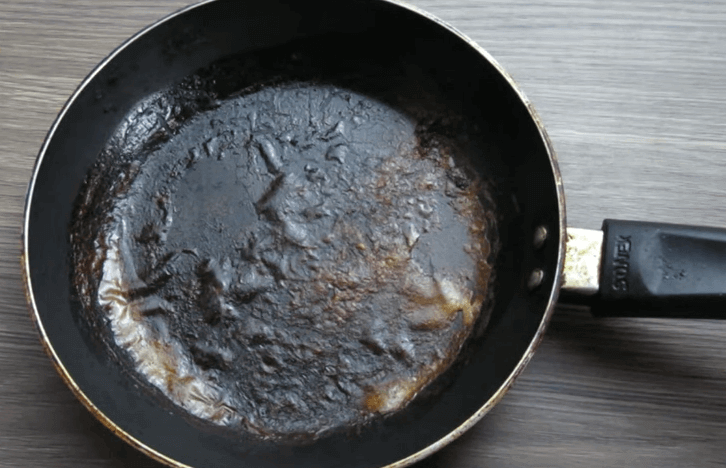
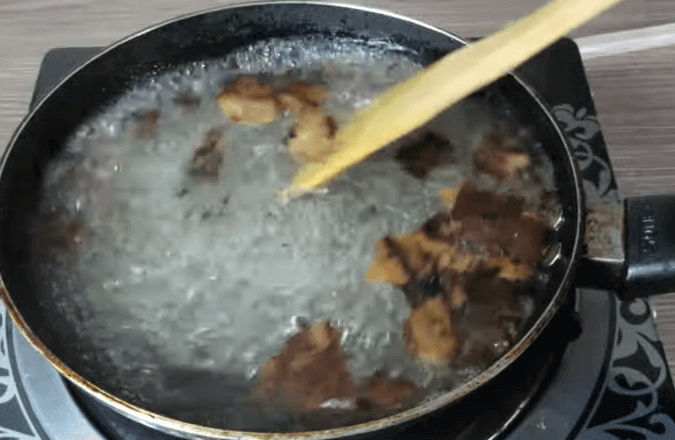
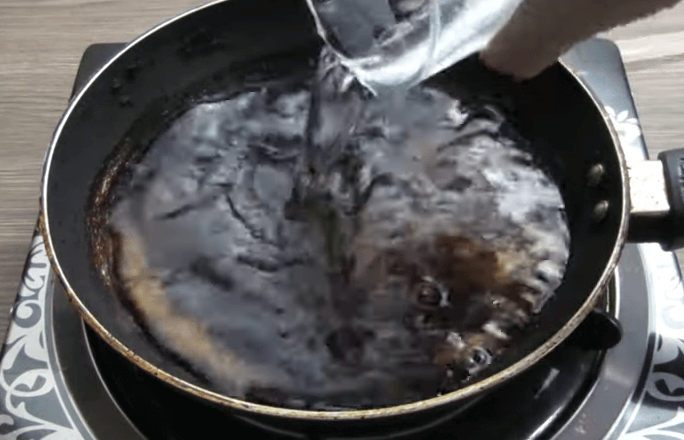



Comments(0)